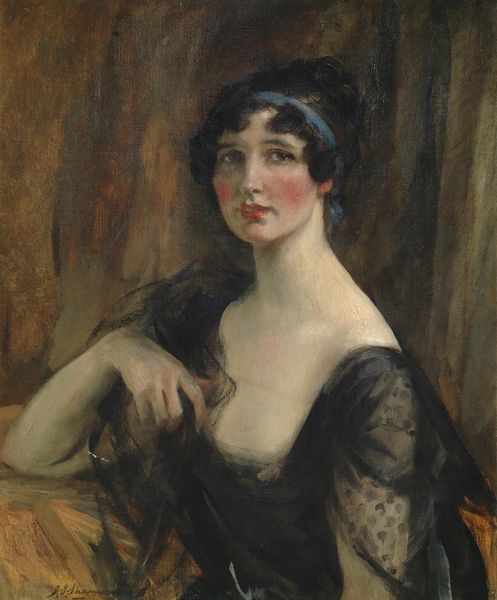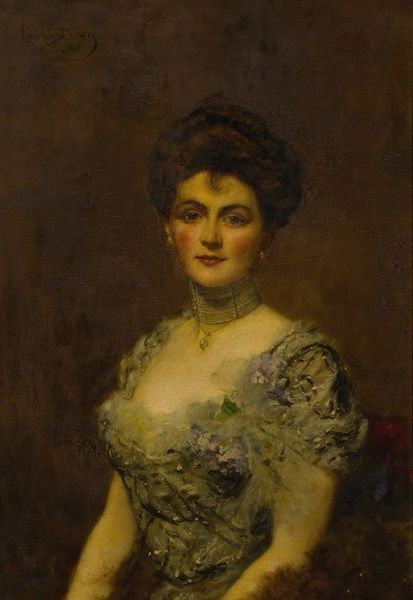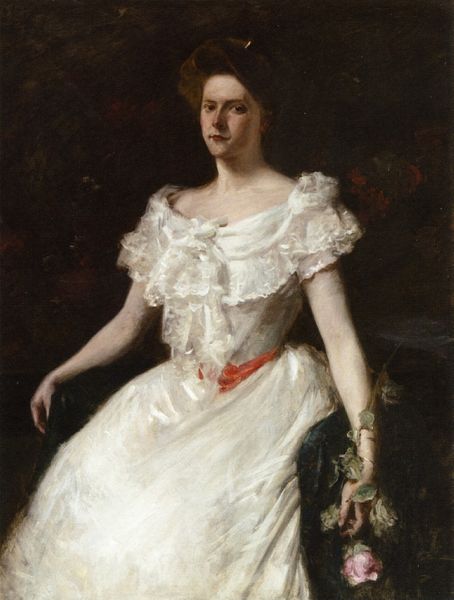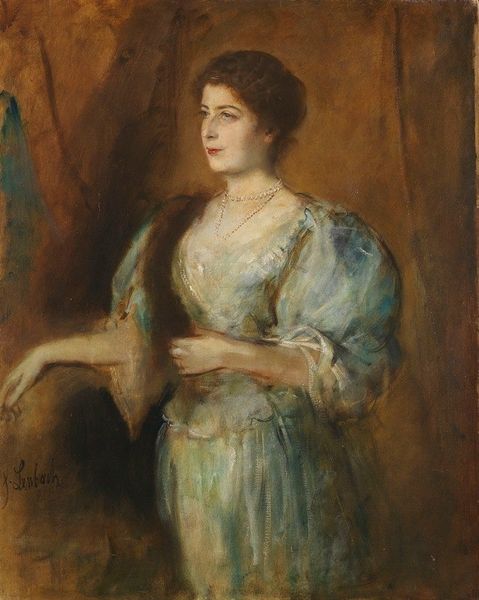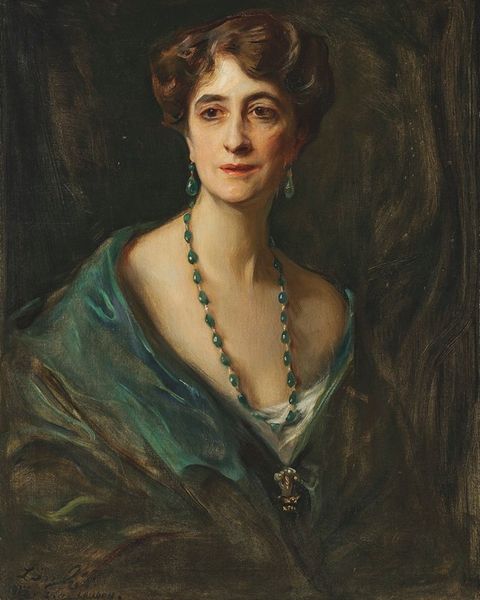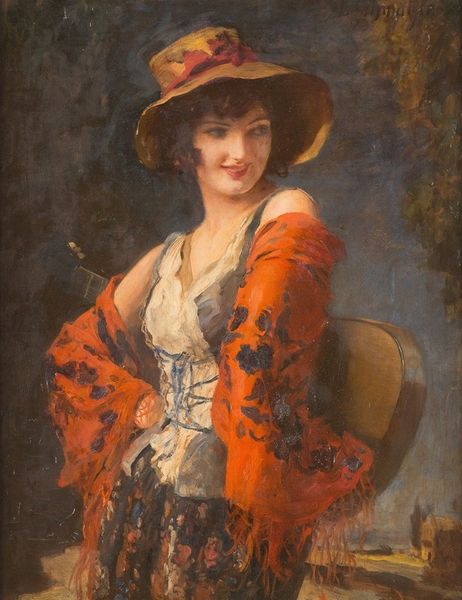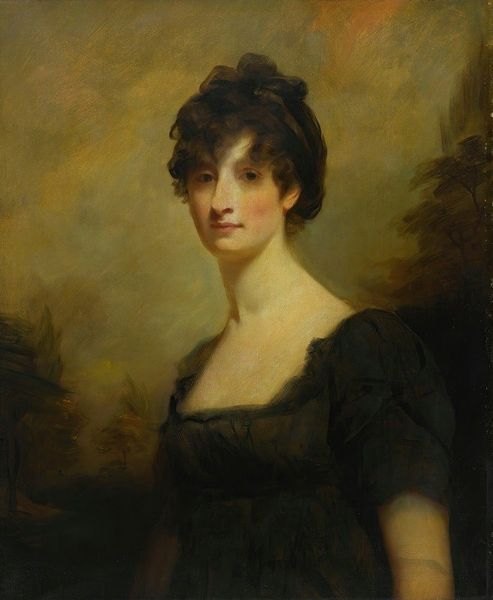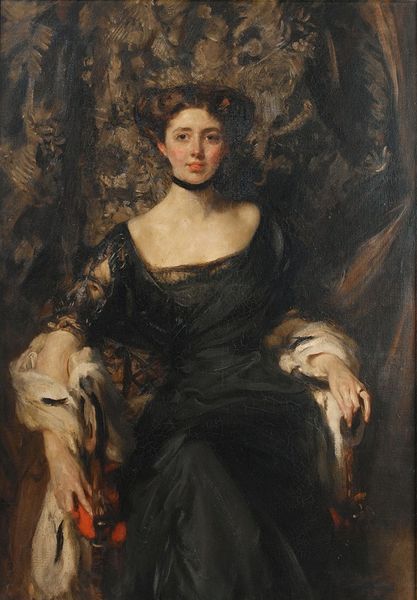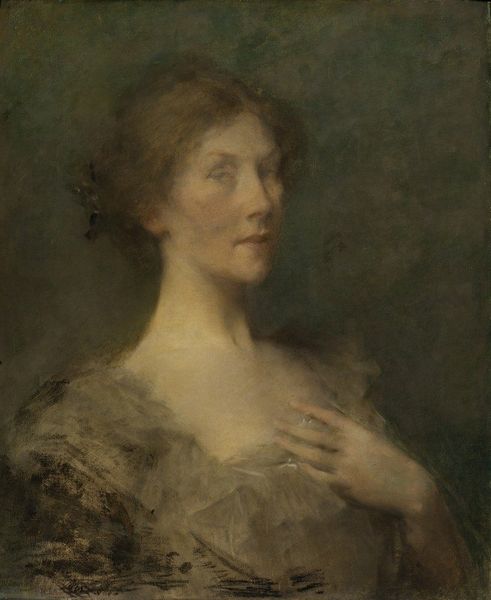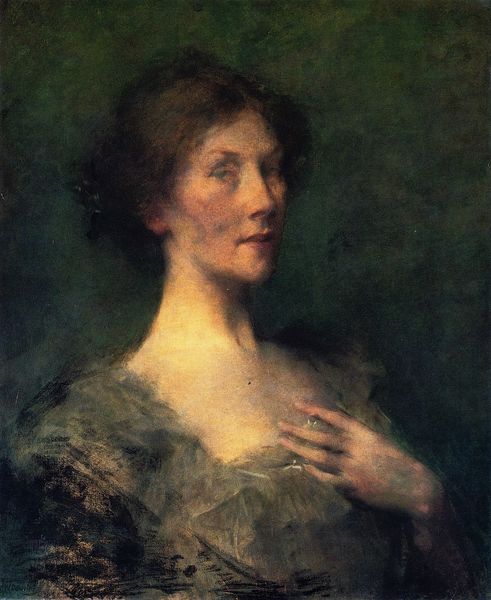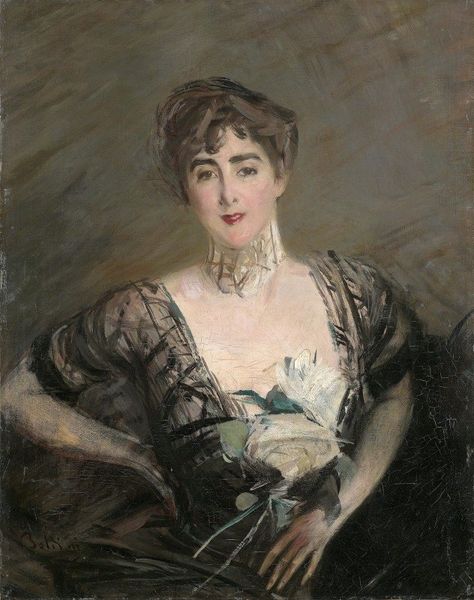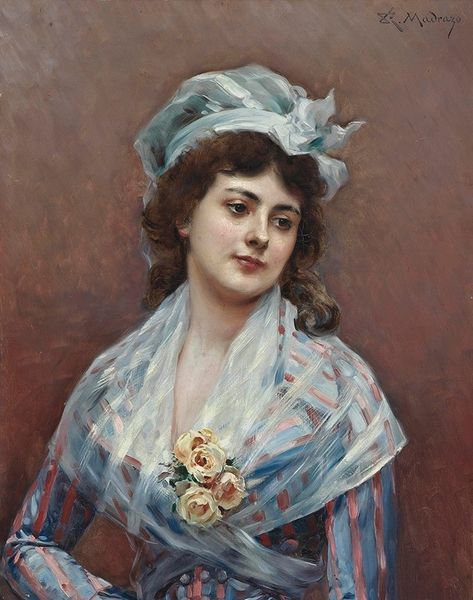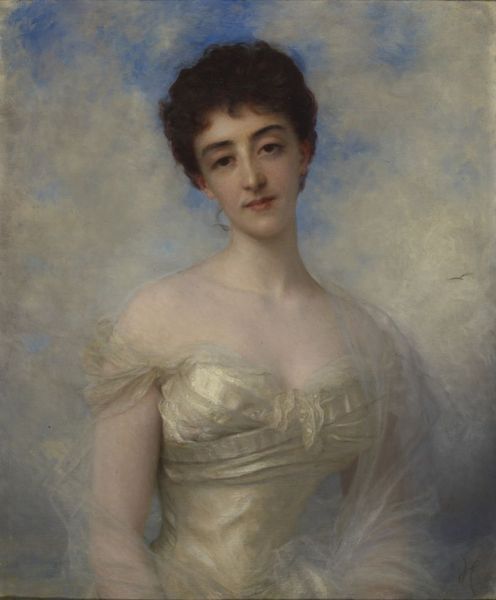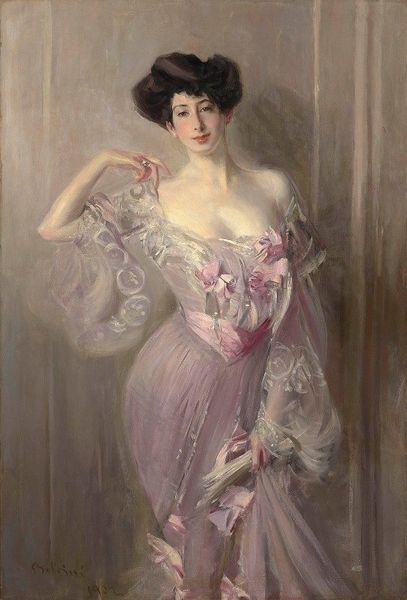
Copyright: Public Domain: Artvee
Curator: Pascal-Adolphe-Jean Dagnan-Bouveret painted "Portrait de Fanny Thérèse Reinach" in 1896 using oil paint. Editor: There’s a definite somberness to the painting, isn’t there? It's visually very soft, almost melancholic. I'm drawn to the fabric—it seems to shimmer despite the darkness. Curator: Yes, there is a duality at play here. Let’s consider Reinach and the social context of the portrait; her family, prominent in banking, reveals an upper-class Jewish identity during a time of growing antisemitism in France. The subdued color palette might subtly reflect the tension of that era, don’t you think? It's a muted assertion of status and belonging. Editor: Absolutely. But look at the craft of rendering that silk. It must have taken many hours of labour, careful layering of pigments to achieve that sheen. Dagnan-Bouveret demonstrates incredible technical skill. He elevates this painting through a painstaking production. And also consider who was part of his factory; how many were working on it. Curator: Indeed. And to delve further, think about how gender intersects here: a woman depicted with refined poise. The portrait subtly critiques societal expectations, even while appearing to simply be an object of aesthetic beauty meant to showcase wealth and gentility. Editor: Precisely. Those puffy sleeves aren't just fashion; they represent countless hours of someone's labour at textile production! Look at the means, not just the result; they become politically charged. Who created those fabrics, under what conditions? Curator: A poignant contrast. I now see her expression differently, less passively demure and perhaps even a bit…resistant. Editor: Right. And through examining the process, the creation of the dress, one comes to understanding of that context in a whole other perspective that maybe no one thinks to consider, right? Curator: Yes, absolutely. The weight of material culture—history etched in textiles. Fascinating. Editor: The production of such a piece has such importance behind a portrait! Curator: Indeed, it's those layers, the visible and invisible narratives, that bring richness.
Comments
No comments
Be the first to comment and join the conversation on the ultimate creative platform.
